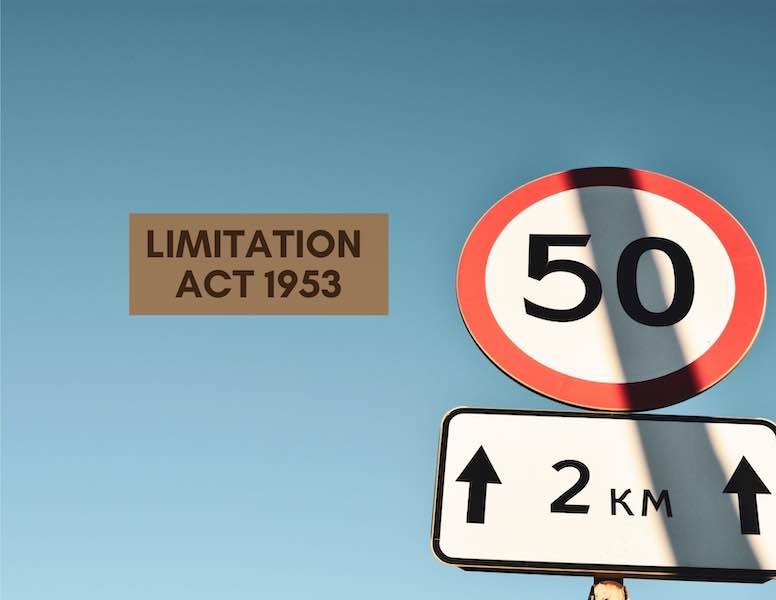Pushing the Limit on Limitation (Part 1)
by Voon Su Huei ~ 10 November 2020
If you intend to sue someone under a civil suit, it is important that you commence an action with reasonable speed. Pursuant to the Limitation Act 1953, the law does not allow parties to sit on their rights forever.
The most common example would be the six-year limitation period to sue for a claim founded on contract or on tort (i.e. no action for a claim rooted in contract or tort shall be brought after expiration of six years from the date the cause of action accrued).
This article seeks to examine the scenario where a limitation period might be extended beyond the normal time-frame. To that end, section 24(1) of the Limitation Act 1953 (“the Act”) is instructive:
“(1) If on the date when any right of action accrued for which a period of limitation is prescribed by this Act, the person to whom it accrued was under a disability, the action may be brought at any time before the expiration of six years, or in the case of actions to which subsection 6(4) or section 8 of this Act applies, one year from the date when such person ceased to be under a disability or died, whichever event first occurred, notwithstanding that the period of limitation had expired:…”
What Amounts to Disability?
Section 2(2) of the Limitation Act provides that a person is deemed to be under a disability if he is a minor (i.e under 18 years of age) or is of unsound mind.
An illustration of the application of section 24(1) of the Act can be seen in the High Court case of Zainon Suppian Suppiah v UM [2008] 7 CLJ 408.
The original plaintiff, Suppian Suppiah, was employed by the Defendant as a bus driver. In 1982, Suppian was diagnosed with paranoid schizophrenia. Around 1983, he was dismissed by the Defendant from his services. After recovering in 1997, i.e. more than 10 years after he was dismissed, Suppian sued for unlawful dismissal. This action was subsequently taken over by his daughter after Suppian’s death in 1998.
It was held that limitation did not apply in that case as Suppian was incapacitated during the time he had a right to sue.
The English High Court decision of Seaton and others v Seddon and others [2012] EWHC 735 illustrates the principle that time would not begin to run when a person was under 18 years old at the time the cause of action accrued. Justice Roth held:
“[87] The Fourth Claimant was born on 23 May 1967. Accordingly, as at the date of accrual of the causes of action he was under a disability by reason of his age (“the first disability”). He ceased to be under that disability on becoming 18 on 23 May 1985. In the ordinary course, subject to application of ss 21 or 32 of the 1980 Act, time would therefore begin to run on that date and would have expired six years later on 22 May 1991.”
Note, however, that section 24 of the Act comes with a proviso in subsection 24(4) which among others, provides that:
“(a) nothing in such provisions shall affect any case where the right of action first accrued to some person not under a disability through whom the person under a disability claims”
The import of subsection 24(4)(a) seems to be as follows at least insofar as minors are concerned: if a minor seeks to sue for negligence for instance, cases appear to suggest that time will still begin to run against him/her if the said action can be filed through a litigation friend.
In other words, if a minor wants to sue, and can in fact do so through a litigation friend, the law will not wait till the minor turns 18 before holding that time starts to run.
The above proposition is illustrated through two cases, the first of which is the case of Tham Meng Fatt v Utam Singh Omnibus Co Ltd [1982] 2 MLJ 355 where the court expressly said that:
On the facts in the present case, this court also finds that the fact that two of the plaintiffs were infant at the material time is of no significance in sofar (sic) as the statute of limitation as action can still be filed pursuant to O 9 of the Subordinate Courts Rules 1980 by their next friend and which was in fact filed on their behalf.
In a more recent decision of Natahlie Nordberg v Quah Thong Sai & Anor [2014] MLJU 1736 regarding an infant who suffered from injuries due to childbirth trauma, the court accepted that there was a six-year time period to sue from the time the childbirth mishap took place. In that case, the infant had brought the action against the Defendants through her mother and next friend.
Continuous Disabilities
As indicated above, it is essential that a disability must be operative at the date when the cause of action accrues. This is because an intervening disability does not postpone the limitation period.
However, continuous periods of different disabilities would prevent time from running. Therefore, in the case of a minor who becomes of unsound mind shortly before obtaining his majority, the period of limitation starts only upon his regaining soundness of mind after the age of 18.
The issue on continuous disabilities is demonstrated in the English case of Seaton and others v Seddon and others [2012] EWHC 735.
In that case, the fourth claimant was underage (“first disability”) at the time the cause of action accrued. Before that first disability had ended, the fourth claimant suffered from mental incapacity (“second disability”).
The court decided that the fact that mental incapacity can be long-lasting (and that therefore time may not run for a long time) did not stop the court from making a finding that so long as a person is under a disability, the limitation period should not start to run so that he is not potentially compelled to commence proceedings.
Having given an overview on the issue of extending the limitation period, Part 2 of this article will explore the postponement of the limitation period due to fraud or mistake as well as the general limitations of the current framework of the Limitation Act 1953.

